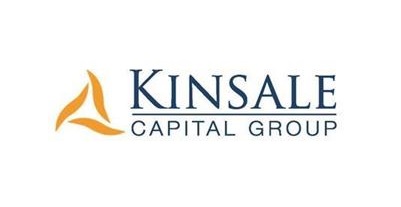Today we are initiating coverage of a new short idea, Trinity Industries, Inc., which is listed on the NYSE under the ticker: TRN. Subscribers can download our report using the link below:
In this month's issue of "Short Shrift," (the first of the new year) please find our thoughts on recent strength in shares of BLDP, weakness in KNSL, and the announcement that PSA has added two new independent trustees to its board of directors.
We write today to terminate coverage of Michaels Companies (Nasdaq:MIK), after our thesis has fully run its course. In Antrim's early days, before we had decided to pivot towards an exclusive focus on short idea generation and research coverage, we had initiated on two long ideas which we considered to be high conviction, special situations with unique, near term catalysts for price appreciation. Today, we are terminating our coverage of MIK, and moving to a rating of "Not Rated." Our thoughts on the initiation and current state of affairs are elaborated on in our write up.
In this month's installment of "Short Shrift," we provide subscribers with updates on short ideas under our coverage, as well as the results of our ongoing diligence work. In this issue, we discuss our work on the Mattress industry, including thoughts on TPX, PRPL, and CSPR. QSR, BLDP, and SNA found themselves or their competitors in the news, and we provide an ongoing update on our series of diligence conversations with automotive techs, as it pertains to SNA.
In light of news updates published in the Wall Street journal over the weekend, Elliot Management's open letter to the PSA board of directors, and the company's response published yesterday, Antrim offers our thoughts on the developments at PSA and the outlook for storage.
Today we are initiating coverage of a new short idea: Public Storage, Inc., listed on NYSE under the ticker: PSA. Subscribers can download our report using the link below.
On Thursday, November 12th, TransDigm reported fiscal Q4 earnings, with a headline EPS of $2.89 vs. S&P Cap IQ consensus of $1.95. Download our report for our thoughts on TDG earnings quality and management commentary.
On Thursday October 29th, after market close, Kinsale reported operating earnings of $0.42, $0.35 below the consensus expectation of $0.77. Download our report to find our thoughts on the Kinsale results, and management commentary.
On Tuesday, October 27th, before market open, QSR reported earnings, and hosted a conference call to discuss their financial results. Attached, please find Antrim's thoughts on the QSR quarter, along with our outlook for the shares.
This morning before market open, SNA reported earnings. The company hosted a conference call to discuss results at 10am ET / 9am CT. Please download our Q3 Earnings Review to find Antrim's thoughts on the quarter and conference call:














